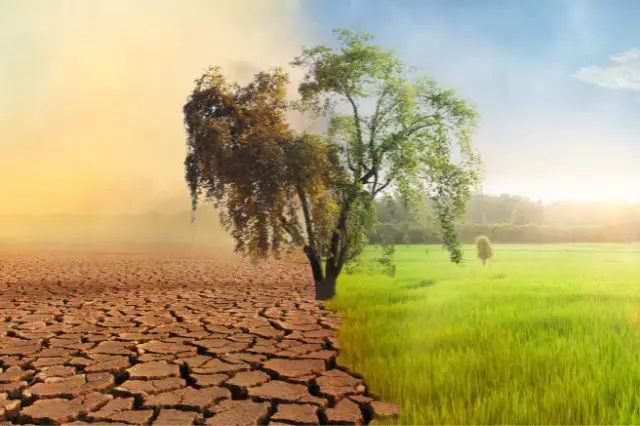The True Cost of Climate Change

We often think that switching to more eco-friendly ways of living and working is expensive, however the costs of going green pale in comparison to the far-reaching effects that the climate will have on the global economy and output. In this article, we’ll discuss the true cost of climate change.
The Climate Crisis
Climate change refers to a long-term change in weather conditions and average temperatures on a global scale and the main cause is human activity.
The concentration of greenhouse gases like methane and carbon dioxide in the earth’s atmosphere is directly linked to the average global temperature and this has been rising steadily since the Industrial Revolution. However, global warming has been accelerating at a more rapid pace in recent decades, surprising even climate change scientists.
The effects of climate change aren’t just limited to higher average temperatures globally but also include water scarcity and droughts, more frequent and severe wildfires and storms, melting polar ice, flooding, and threats to wildlife, habitats, biodiversity and human life. People living in developing countries, or small island nations surrounded by rising sea levels are at most risk from some of the devastating effects of global warming.
The Economic Cost of Climate Change
The economic costs of climate change are unevenly distributed, with the current impacts of climate change disproportionately affecting developing countries, requiring mitigation and clean-up costs, for example, flood protection and disaster relief. However, the economic costs of cutting emissions to reduce the future impact of climate change are mainly the responsibility of developed countries.
Evidence has shown that the future benefits of action outweigh the costs of inaction and that if we choose to do nothing, not only will the effects of climate change be more profound but the financial costs even greater.
Unfortunately, it’s too late to reverse the damage that has already been done – and the greenhouse gases that are currently in the atmosphere will continue to affect the planet’s climate for decades – or possibly centuries – to come. The UN Environment Programme estimated that the global cost of adapting would grow to $140-300 billion per year by 2030 and $280-500 billion per year by 2050.
This means that the focus needs to not only be on reducing further emissions to limit the longer-term impact for future generations but also on preparing for the inevitable impacts to come.
As a result, new industries are emerging to help businesses, local governments and non-profit organisations navigate the financial costs of climate change, such as climate change lawyers.
What’s Next?
Fortunately, the world is finally listening to climate change scientists and changes are being made at all levels to become more sustainable. Here are some of the steps we all need to take to lessen the future impacts that climate change.
Stop using fossil fuels
Fossil fuels like coal, oil and gas, all contribute to greenhouse gas emissions and worsen climate change.
Switch to renewable energy
Clean, renewable energy technology such as solar, wind and tidal power should replace fossil fuels.
Use sustainable transport
Reducing the use of vehicles that use petrol or diesel will help limit the ongoing effects of climate change and also reduce air pollution at the same time. This includes cars, buses, planes, trains and ships.
Minimise energy waste
Cold, draughty, poorly insulated homes waste money and energy. That’s why it’s so important to ensure all homes are properly built, insulated and fitted with energy-efficient heating.
Go vegan
On an individual level, one of the best ways to prevent climate change is to reduce meat and dairy consumption and eat a mainly vegan diet. Farmers, businesses and retailers can promote this through changes in farming practices and a shift towards more nutritious, affordable and tasty plant-based products.
Planting trees, protecting forests & re-wilding
Taking care of the natural world by planting trees in the right places or giving land back to nature through ‘rewilding’ schemes can help nature to absorb more carbon. We also need to protect existing forests such as the Amazon and prevent companies from destroying forests to clear space for farms and plantations.
Protect oceans
Our oceans are capable of absorbing carbon dioxide from the atmosphere, however, many are currently in poor shape due to overfishing, shipping and drilling for oil and gas.
Reduce consumption
Lifestyle choices and consumer behaviours such as food, fashion and technology all impact the climate. Reducing consumption will reduce the environmental effects, for example, switching to secondhand clothing rather than fast fashion.





